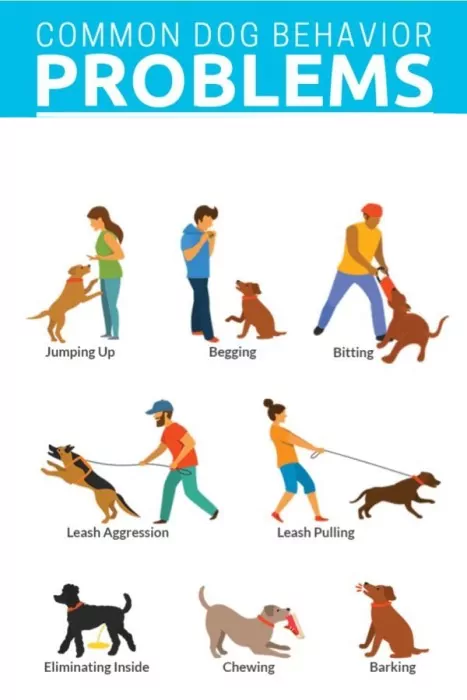Early puppy training for a smooth learning experience.
Early puppy training for a smooth learning experience.
Blog Article
Master Essential Commands: Effective Pet Dog Educating Facilitated
Reliable dog training is a fundamental facet of liable family pet possession, and mastering necessary commands serves as the foundation for a harmonious connection between trainer and pet. Understanding the nuances of canine habits and the training procedure is vital; nevertheless, the journey to a trained pet dog often offers unexpected difficulties that call for interest.
Understanding Your Pet dog's Behavior
To understand the subtleties of efficient pet dog training, it is essential to break down and analyze your dog's actions. Dog training. Comprehending the motivations behind your pet's activities is vital; actions can come from impulse, concern, exhilaration, or a wish for focus. By observing your pet dog in different scenarios, you can recognize patterns that may indicate underlying feelings or needs
As an example, a pet that barks exceedingly might be expressing monotony, anxiousness, or a requirement for social interaction. On the other hand, a pet dog that shows destructive behaviors might be looking for stimulation or relief from stress. Acknowledging these triggers allows you to tailor your training strategy efficiently.
Furthermore, it is essential to consider the canine's breed qualities, as they can influence habits considerably. Some types are predisposed to details attributes, such as herding or protecting instincts, which can affect their reactions to particular stimuli.
Last but not least, consistency in your feedbacks to your pet's habits promotes a far better understanding in between you and your pet dog. This mutual comprehension is fundamental for building trust and helping with a reliable training procedure that supports both behavior modification and favorable reinforcement.
Vital Commands to Show
Showing necessary commands is an essential aspect of effective canine training, supplying the structure for a mannerly and receptive pet dog. These commands not just improve interaction in between the proprietor and the canine yet additionally make sure security in numerous settings.
The most important commands include "Sit," which urges your pet to remain fixed and tranquil; "Keep," which strengthens the concept of continuing to be in one place till released; and "Come," which is crucial for remembering your pet dog from possibly harmful scenarios. "Down" shows canines to relax, promoting leisure and control, while "Leave it" assists stop pets from choosing up damaging or unwanted items.
" Heel" is another important command that urges your pet to walk very closely close to you, enhancing leash manners. Lastly, "No" serves as a critical boundary-setting command, helping to correct unfavorable habits.
Training Strategies for Success
Effective pet dog training counts heavily on utilizing a selection of techniques that satisfy both the pet's learning style and the proprietor's training objectives. One key method declares reinforcement, which includes rewarding wanted behaviors with treats, praise, or play. This method motivates the dog to duplicate those behaviors, cultivating a solid bond in between proprietor and pet.

One more reliable technique is clicker training, where a distinctive audio, made by a remote control, notes the precise minute a pet dog executes a preferred action. This accurate timing helps pets link the behavior with the reward, boosting their understanding.
Consistency is critical in all training methods. Establishing clear commands and maintaining the same cues assists the pet dog understanding assumptions much more rapidly. In addition, brief, my review here appealing training sessions protect against boredom and rise retention.
Incorporating socialization opportunities is also important. Revealing dogs to various environments, individuals, and various other pets helps them create confidence and flexibility.
Lastly, patience plays a substantial function in successful training - Dog training. Each pet dog learns at their own speed, and comprehending this can cause a more pleasurable training experience for both the proprietor and the pet. Applying these strategies will set the foundation for reliable pet training
Common Difficulties and Solutions
In spite of the ideal training strategies, canine owners commonly experience common challenges that can hinder development. When household participants use different commands for the same actions, it puzzles the pet dog, leading to inconsistent feedbacks.
In addition, some pets may display stubbornness or lack inspiration. This can frequently be addressed by integrating favorable reinforcement techniques, such as treats or praise, to encourage wanted behaviors. Customizing incentives to what your pet dog finds most encouraging can dramatically improve their engagement.
Lastly, fear or anxiety can impede development in training. Acknowledging signs of anxiety and changing the training rate accordingly is crucial. Employing progressive exposure to been afraid stimulations can assist build confidence in time, helping with a much more effective training experience.
Preserving Consistency and Perseverance
Uniformity and perseverance are extremely important in canine training, as they develop site the foundation for attaining lasting behavioral changes. Pets thrive on routine and clear expectations; thus, maintaining a regular strategy in commands, benefits, and improvements is crucial.
Equally crucial is the function of persistence. Training a pet is not a rapid process; it requires time and rep. Canines, similar to human beings, have varying learning paces and may not understand commands promptly. Instructors must acknowledge this and remain tranquil, supplying motivation instead of frustration. Favorable support plays a crucial function right here, rewarding desired actions and aiding to cultivate a trusting relationship in between the canine and instructor.
Verdict
Understanding vital he has a good point commands is fundamental to effective dog training, promoting improved communication and strengthening favorable habits (Dog training). Eventually, a trained pet dog not only shows great behavior yet additionally establishes self-confidence, contributing to an unified partnership in between the pet and its proprietor.
Report this page